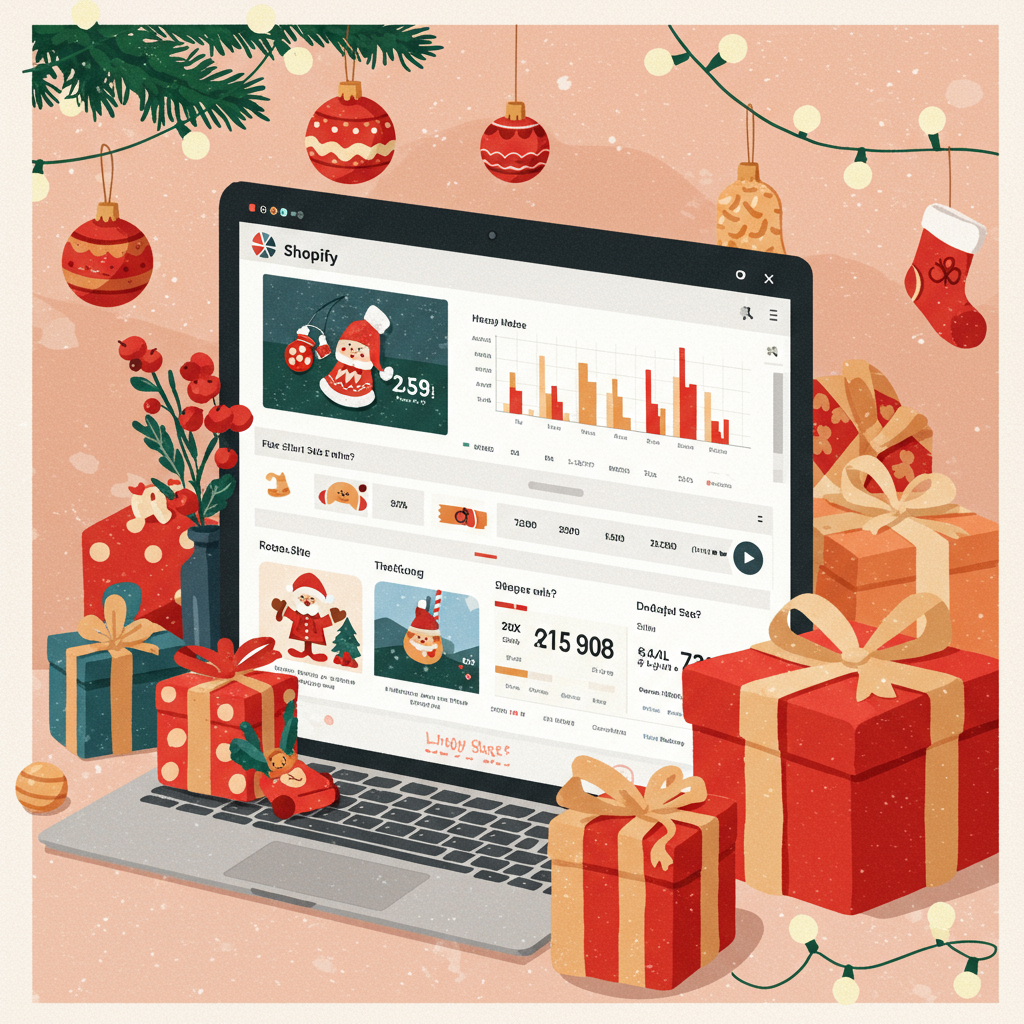A comprehensive, first-person walkthrough to maximize your sales and minimize stress during the busiest shopping period.
The holiday season is a magical time for shoppers, but for us, Shopify merchants, it’s a critical period that can make or break our year. It’s a whirlwind of increased traffic, sales, and logistical challenges.
That’s why I’m here to share my comprehensive guide on how to prepare your Shopify store to not just survive, but thrive during this bustling time. Proactive preparation is your secret weapon.
My first piece of advice, and perhaps the most crucial, is to start early. The ‘holiday season’ isn’t just November and December; it begins much sooner for planning purposes.
Think about it: Black Friday, Cyber Monday (BFCM), Christmas, and New Year’s Eve are all major shopping events. Each requires its own specific strategy and lead time.
Let’s dive into the core areas you need to focus on. We’ll begin with your website itself, ensuring it’s a smooth, fast, and delightful experience for every visitor.
Your site speed is paramount. During peak times, even a slight delay can lead to abandoned carts. I recommend using tools like Google PageSpeed Insights to identify and fix bottlenecks.
Optimize your images, minify CSS and JavaScript, and consider a CDN. A fast site equals happy customers and better search engine rankings, which is crucial for holiday traffic.
Next, ensure your store is fully mobile-responsive. A significant portion of holiday shopping now happens on smartphones. Test your checkout process thoroughly on various devices.
Simplify your navigation. Shoppers are often in a hurry during the holidays. Make it incredibly easy for them to find what they’re looking for, whether it’s by category, price, or gift recipient.
Implement clear calls to action (CTAs). Guide your customers effortlessly from product discovery to purchase. Don’t make them think too hard about their next step.
Inventory management is where many merchants stumble. Accurate inventory forecasting is vital. Look at last year’s sales data, current trends, and any marketing campaigns you plan.
Order popular items well in advance, accounting for potential supplier delays. Running out of stock on a best-seller during BFCM is a missed opportunity you can’t afford.
Consider creating gift bundles or limited-edition holiday products. These can help move slower inventory or create unique offerings that stand out from the competition.
Now, let’s talk about getting the word out. Your email list is gold. Segment your subscribers and craft compelling holiday-themed campaigns that resonate with their festive spirit.
Start with ‘early bird’ offers, then move to BFCM specific deals, and finally, last-minute gift guides. Personalize as much as possible to make each email feel special.
Leverage social media. Create engaging content that showcases your products in a festive light. Run contests, polls, and use relevant holiday hashtags to increase visibility.
Consider paid advertising on platforms like Google Ads and Facebook/Instagram. Target audiences based on their holiday shopping intent and past behavior for maximum impact.
Think about unique promotions: free shipping thresholds, buy-one-get-one offers, or a free gift with purchase. These incentives can significantly boost conversions.
Don’t forget about gift cards! They are a fantastic last-minute option for shoppers and a great way to secure future sales. Make them prominent on your site and easy to purchase.
The volume of customer inquiries will undoubtedly increase. Prepare your customer service team or yourself for this surge by having resources ready.
Create an extensive FAQ section covering common holiday questions: shipping times, return policies, gift wrapping options, and product details. This can deflect many inquiries.
Implement live chat if you don’t already have it. Real-time support can resolve issues quickly and prevent abandoned carts, especially during high-traffic periods.
Set clear expectations for response times. Even if you’re swamped, acknowledging an inquiry and stating when a full response will come can go a long way in customer satisfaction.
Shipping and fulfillment is often the most stressful part. Clearly communicate your shipping deadlines for holiday delivery on your website, product pages, and checkout.
Offer various shipping options, including expedited services for last-minute shoppers. Partner with reliable carriers and understand their holiday cut-off dates well in advance.
Double-check your packaging supplies. You don’t want to run out of boxes, tape, or void fill during your busiest week. Stock up generously.
Consider offering gift wrapping services. It’s a small add-on that can significantly enhance the customer experience and justify a slightly higher price point.
The season doesn’t end on December 25th. Plan for post-holiday sales to clear excess inventory and capture gift card redemptions. This is a great way to extend the sales period.
Prepare for returns and exchanges. Make the process as smooth as possible to maintain customer loyalty. A good return experience can turn a one-time buyer into a repeat customer.
Analyze your holiday performance. What worked well? What could be improved? Use these insights to refine your strategy for next year, making each season better than the last.
Finally, remember to take care of yourself. The holiday season is demanding. Delegate where you can, and schedule some downtime to recharge.
Your passion and energy are what drive your business. A well-rested merchant is a more effective merchant, capable of handling the holiday rush with grace.
I truly hope this detailed guide helps you navigate the holiday season with confidence and success. It’s a lot to take in, but breaking it down makes it manageable.
What do you think about this article? Do you have any other tips or strategies you’ve found particularly effective for your Shopify store during the holidays? I’d love to hear your insights.






